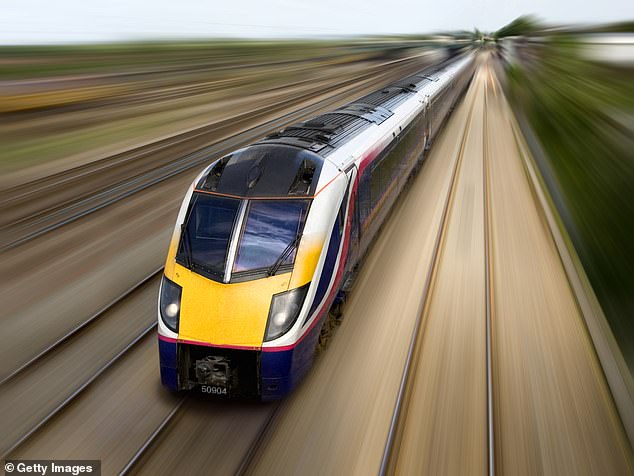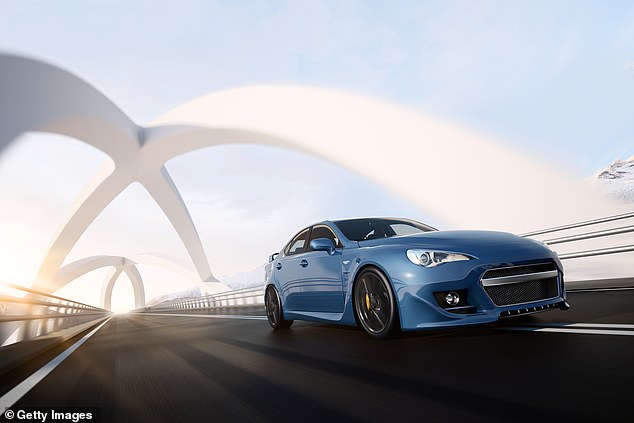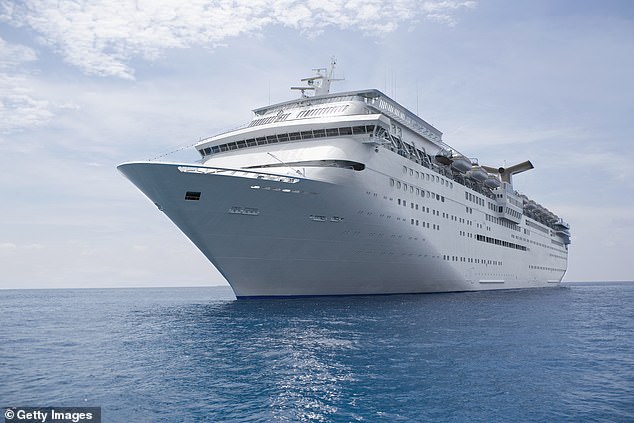Where is it safest to sit on planes, trains, cars, buses or boats? Studies reveal where you’re most likely to survive if you’re involved in a crash while travelling
When choosing to buy a car, safety is an important factor for many buyers. Some pilots also choose seats close to the exits, partly because they are easier to leave in the event of an accident.
But the safest place to sit on several popular forms of public transport is rarely considered, despite some sections posing less risk than others in the event of an accident, with the choice potentially making the difference between life and death.
Car journeys have a relatively high risk in terms of deaths per year, with 1,711 road fatalities in 2022, according to final estimates in a government report.
Of these, 44 percent of fatalities were car occupants, 22 percent pedestrians, 20 percent motorcyclists and 5 percent cyclists.
In aircraft accidents there is also a relatively high chance that the passenger will die; according to a 1996 study, the European Transport Safety Council estimated that only 90 percent of aircraft accidents were technically survivable.
But fortunately, new technologies and advances in design mean that vehicle safety is moving in the right direction every year.
Here, MailOnline looks at the safest place to sit on different types of vehicles if you are involved in an accident on the road.
The back of an airplane
A study of 35 years of aircraft accident data found that the middle rear seats of a plane had the lowest fatality rate at 28 percent, compared to aisle seats at 44 percent.
When booking a flight, most people choose seats for legroom, to sit next to the window or to be closer to the exits.
People rarely choose the middle seats in the last row, but statistically they have been shown to be the safest.
A TIME study of 35 years of airplane crash data found that the middle rear seats of a plane had the lowest fatality rate at 28 percent, compared to aisle seats at 44 percent.
Seats in the rear third had a mortality rate of 32 percent, compared to 39 percent in the middle third and 38 percent in the front third.
After an accident, passengers near an exit are more likely to escape alive, according to a 2008 study from the University of Greenwich.
The middle carriage of a train

Overall, choosing a seat in the middle cars may be the safest option in the event of a collision, said Ross Capon, president of the National Association of Railroad Passengers.
Several studies have suggested that broken rails or welds are the leading cause of derailments on main tracks, and these problems are more likely to cause derailments at the front of the train.
Overall, choosing a seat in the middle cars may be the safest option in the event of a collision, Ross Capon, president of the National Association of Railroad Passengers, told CBS New York.
“If you have a head-on collision or a rear-end collision, you’re probably safer,” Capon said. Experts also suggested avoiding window seats, the release said.
“If three of the fatalities yesterday were the result of people being ejected, you can speculate that you are more likely to be ejected if you sit next to the window,” Capon added.
If you’re making a seating decision based on safety, experts also suggested avoiding window seats, with Capon speculating that “you’re more likely to be turned away if you sit next to the window.”
Safety experts also recommend that those who choose a rear-facing seat are less likely to be thrown forward in the event of a collision.
According to the Federal Railroad Administration, trains are more likely to hit something from the side than head-on or from behind.
The middle back seat of a car

According to the Australasian New Car Safety Assessment Program, a middle rear seat passenger is less likely to be struck by an incoming vehicle in a crash.
Data from a 2008 study published by the National Center for Biotechnology Information, which examined the survival rates of passenger car occupants involved in a fatal crash between 2000 and 2003, showed that the middle rear seat is safer than any other occupant position. also.
It showed that overall, second-row seats have a 29.1 percent greater chance of survival than front-row seats. The middle rear seat has a 25 percent greater chance of survival compared to the other rear seat positions.
Occupants in the middle rear seat were found to have a 13 percent better chance of survival in a fatal accident than passengers in other seats in that row.
The Australasian New Car Safety Assessment Program (ANCAP) also found that a passenger sitting in the middle rear seat is also less likely to come into contact with the vehicle in a crash, as reported in the Australian Drive publication.
But this seating position is also less likely to be equipped with advanced seat belt pretensioners and force limiters than the outboard rear seats.
In the event of a collision, a seat belt pretensioner ensures that the seat belt is tightened early in the collision. The load limiter operates once the force reaches a certain level, releasing the tension so that the passenger does not suffer any seat belt-related injuries.
The front passenger seat is more likely to be affected by crash forces than the rear seat, but in some cars this can be compensated for by the higher levels of protection for this seating position, such as seat belt pretensioners, force limiters and airbags. .
The technology means that in some vehicles the front passenger seat can be considered safer than the rear seat.
Based on ANCAP testing, third-row seats in three-row cars tend to have fewer safety features than those in the second row.
Several third-row seats are considered “part-time” seats and as such have worse geometry than second-row seats, both for safety and passenger comfort.
In addition, in some three-row cars, the curtain airbags do not cover the rear row passengers.
If the car is hit from behind in a crash, third-row passengers would not have as much room to survive as the first and second rows, ANCAP findings show.
In the middle of a bus and furthest from traffic
According to Business Insider, passengers are advised to sit on the opposite side of traffic to avoid out-of-control vehicles that have crossed that lane.
Seats at the front and back of a bus are more dangerous in a crash, with the safest seat typically being between the tires in the middle.
Passengers seated in the middle of the cabin also have more distance from potential hazards such as windows and exits, according to Sege Seats.
For those traveling on a double-decker bus, Lo Kok-keung, an experienced engineer and instructor in road accident reconstruction training at Hong Kong Metropolitan University, told the South China Morning Post that the middle section of the lower deck was relatively safe for passengers in the event of an accident.
“The area is closer to the vehicle’s center of gravity, so passengers will absorb less vibration and impact force if the vehicle collides with something,” Lo said.
‘If the vehicle suddenly brakes or crashes into something, the inertia will push people forward. Front passengers could be thrown through the windshield and fall in front of the vehicle. Those in the middle will likely hit the seats in front of them but remain in the vehicle,” he said.
Lo also noted that the upper deck was certainly not the safest part.
He said: ‘The higher you are off the ground, the more likely you are to be injured if a vehicle rolls over.’
Lower decks or cabins of a boat

The Marine Accident Investigation Branch (MAIB) received reports of 1,263 accidents (casualties and incidents) involving British ships worldwide or ships in British coastal waters in 2022. A total of 1,351 ships were involved.
The Marine Accident Investigation Branch (MAIB) received reports of 1,263 accidents (casualties and incidents) involving British ships worldwide or ships in British coastal waters in 2022, involving a total of 1,351 ships.
The MAIB investigates all types of maritime accidents on or on board British ships worldwide, and other ships in British territorial waters.
The Royal Yachting Association (RYA) has noted the dangers of passengers becoming dislodged from the front of a ship when a boat is traveling at high speed, as the forces are more intense there.
An RYA spokesperson told MailOnline: ‘The decision about where to sit on the powerboat will vary from vessel to vessel, depending on the specific features of the vessel and seating arrangements.
‘Passengers should not be in the forward part of the ship and should sit comfortably around amidships. They should have good handles and face forward, and should not be on the sides of the ship.’
According to Business Insider, the lower decks and cabin are the safest places on a passenger boat. In rough seas, the lower decks pose less risk of injury from flying objects.
Passengers in the cabin are advised to take shelter from flying objects in the corridor.
